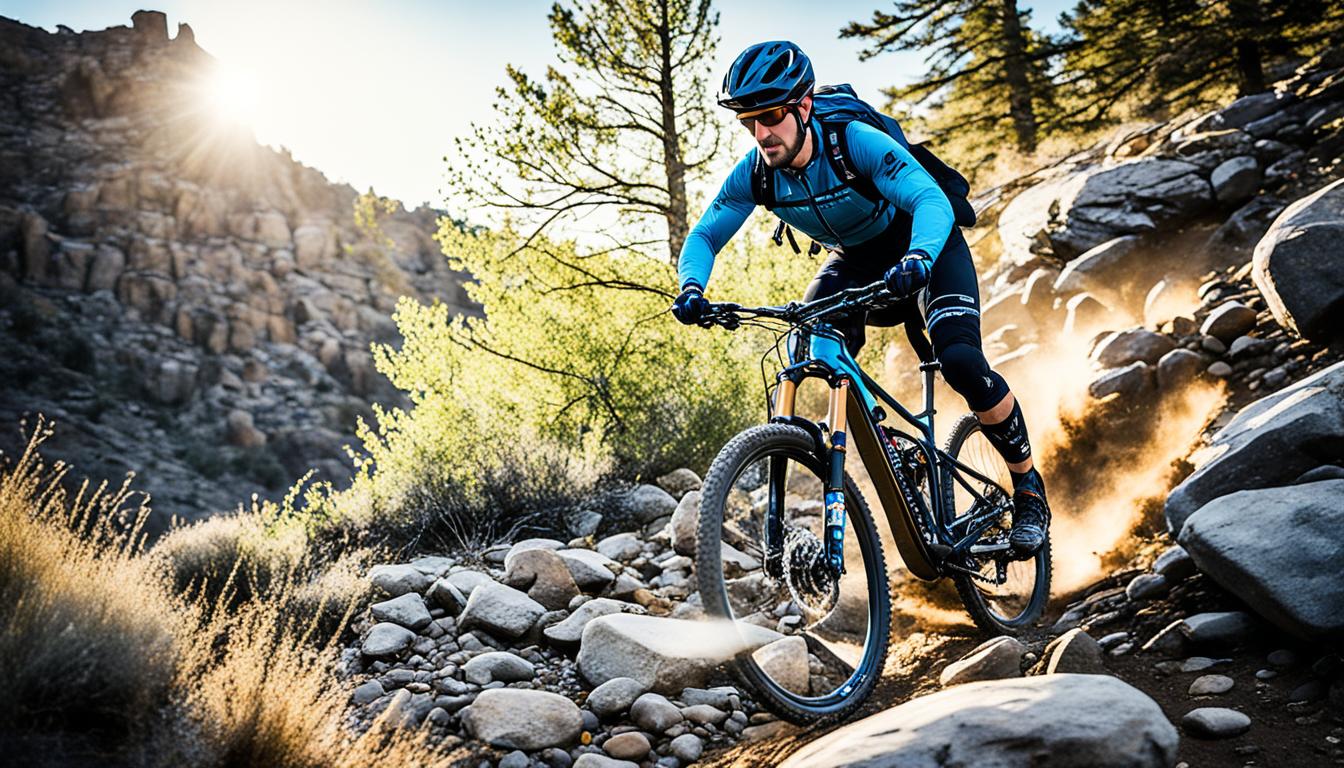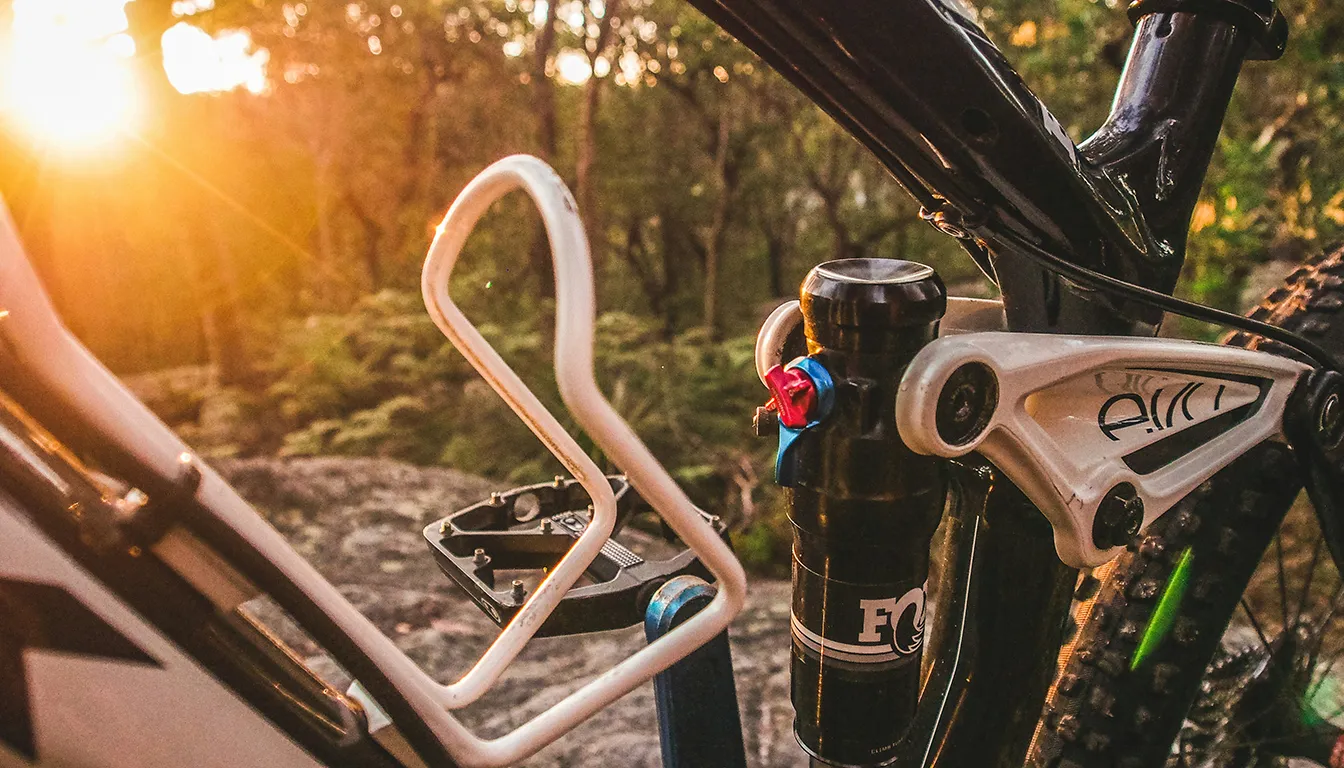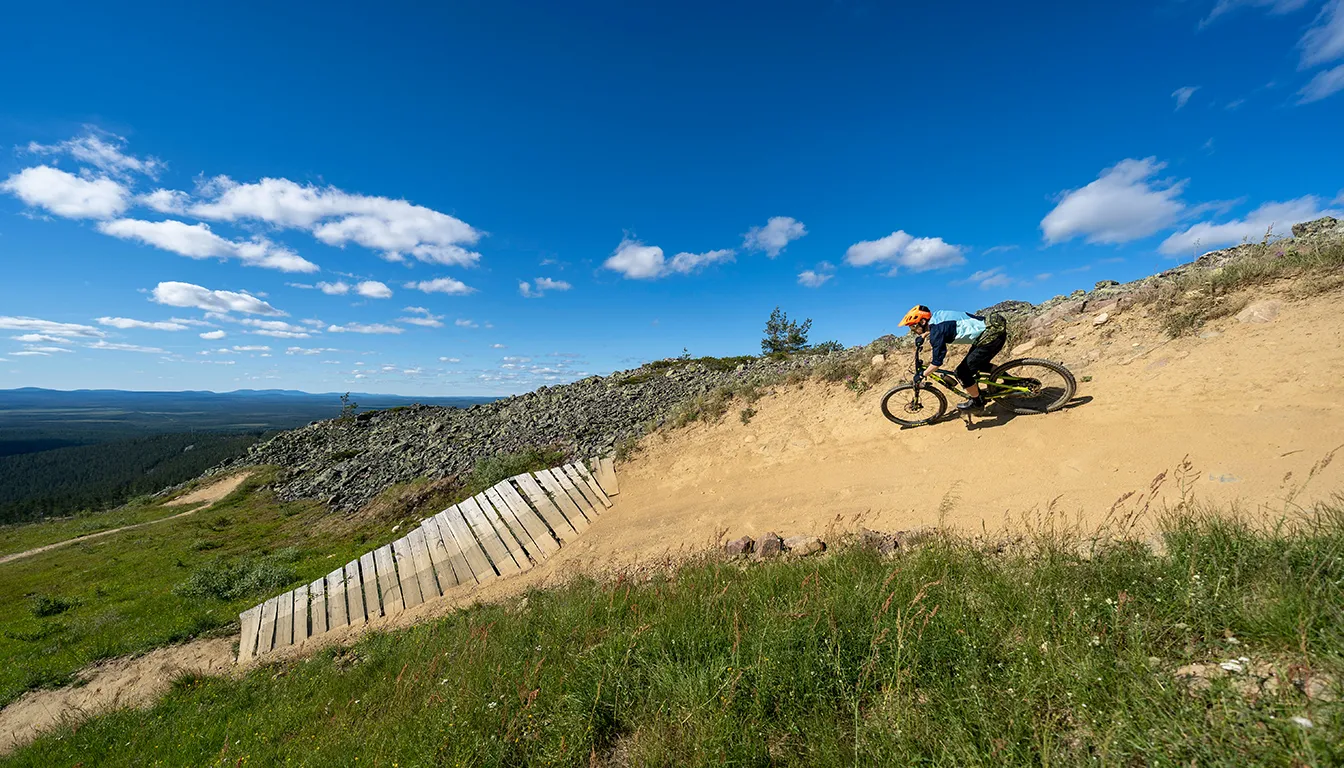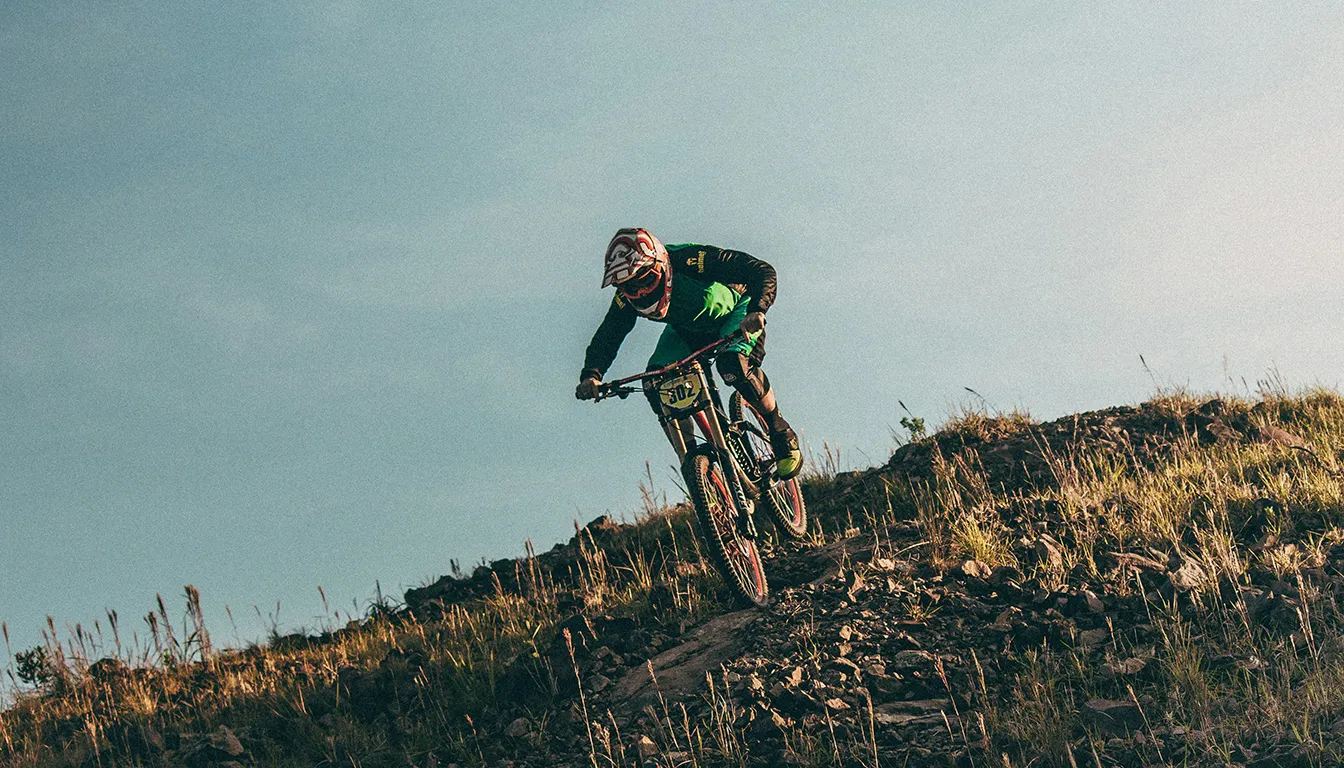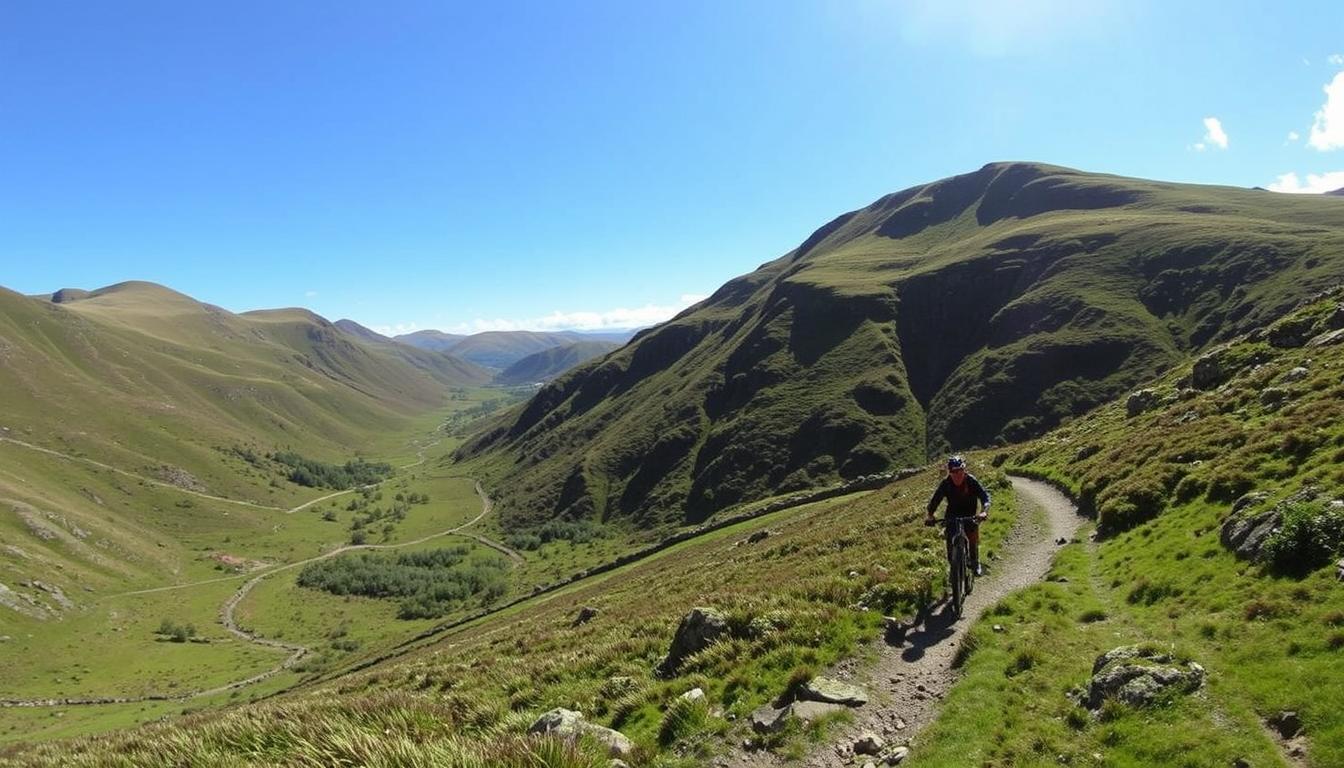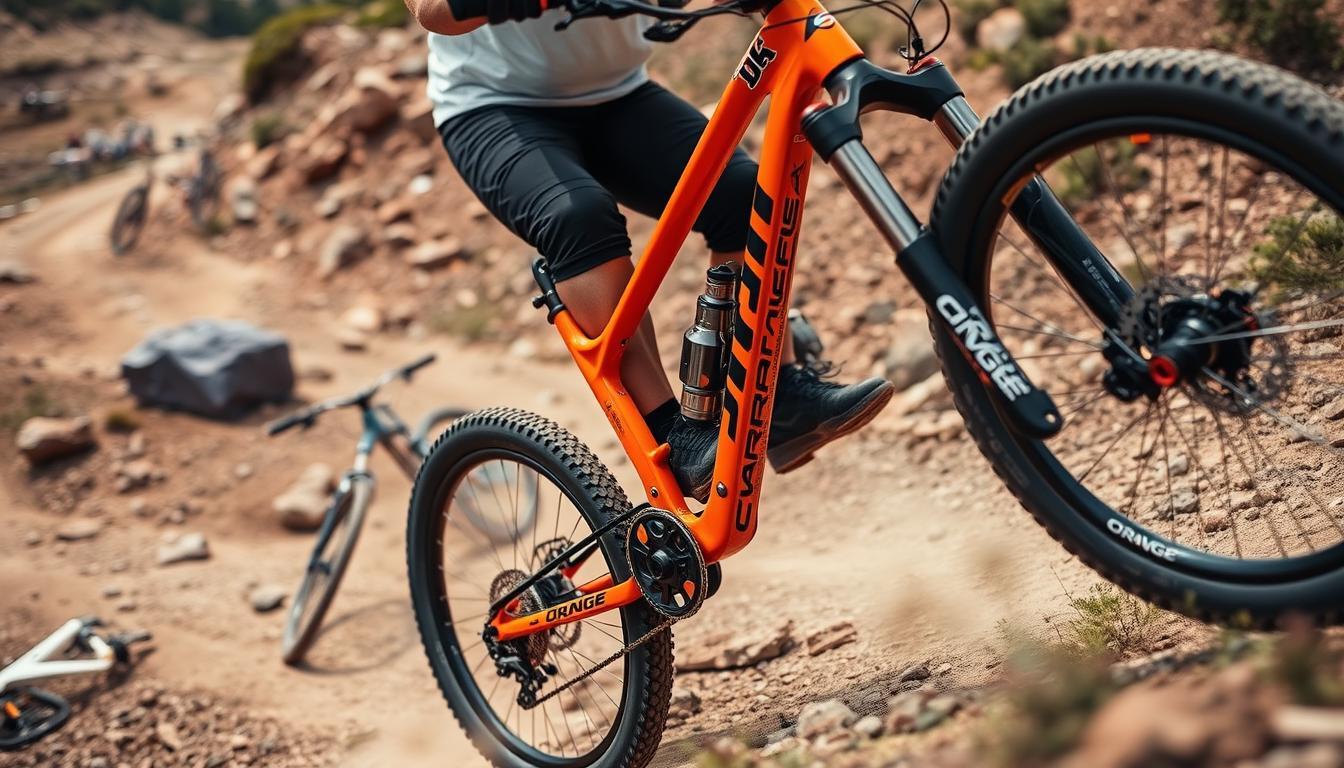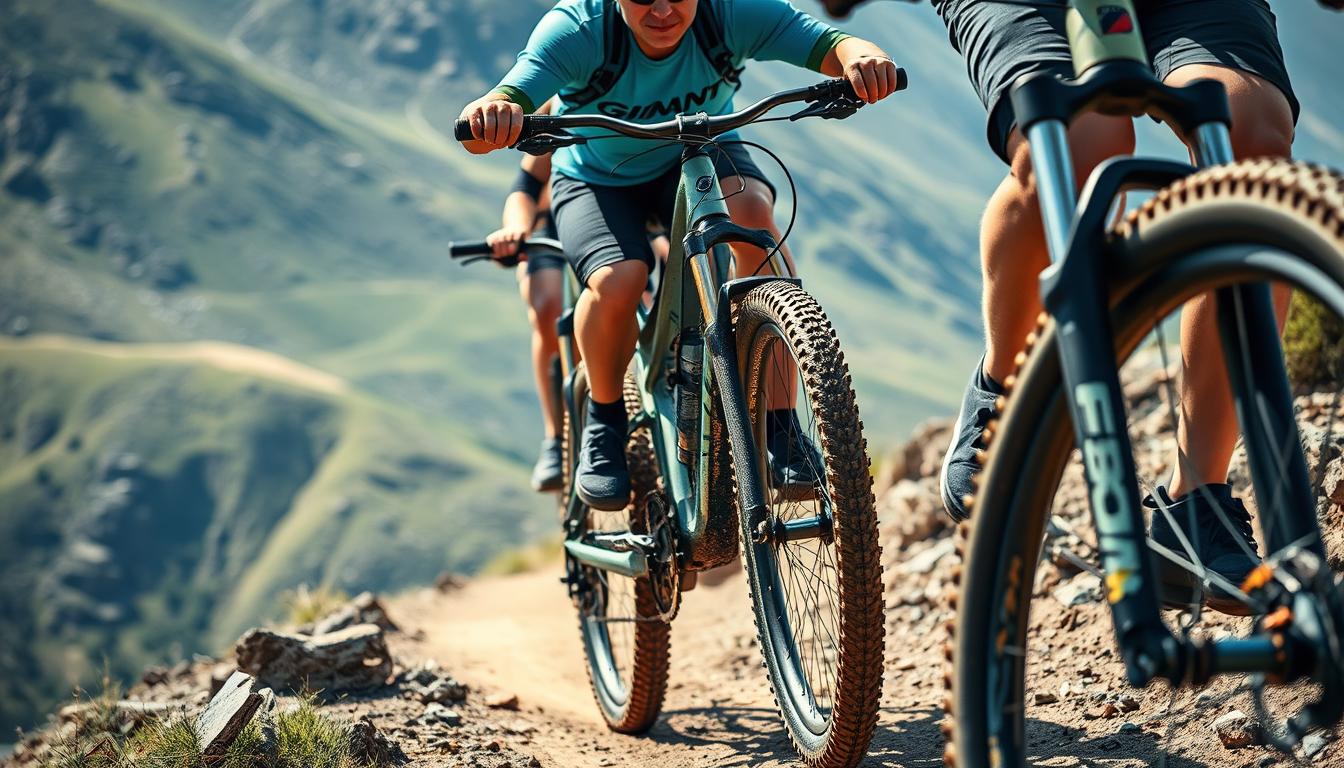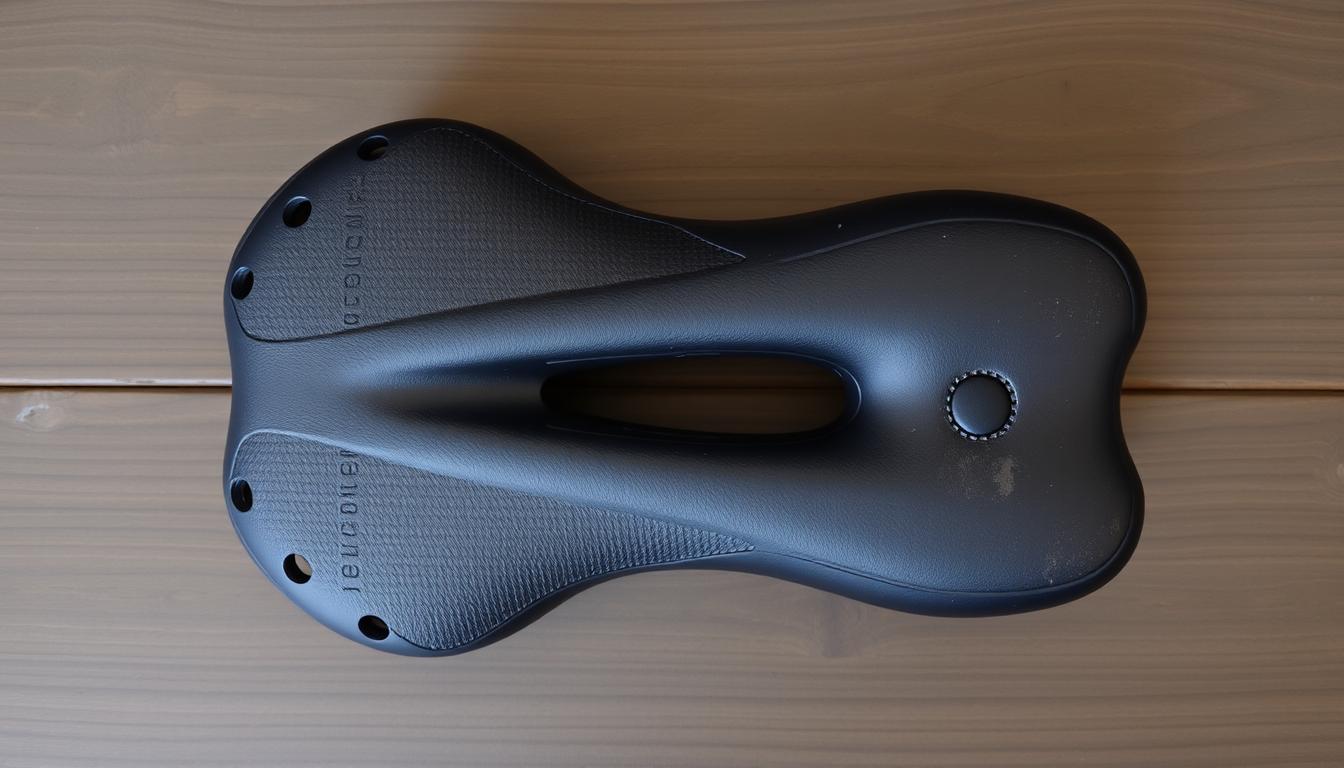Going into mountain biking means you need the right gear for comfort and safety. Choosing the right clothing affects how well you do and how much you enjoy the trails. It’s all about finding what works best for you while being prepared for any weather and tough paths.
Trail and downhill bikers like loose clothing, with baggy shorts over padded Lycra for extra comfort, and a loose top. Cross-country riders choose tight Lycra to move faster. Important gear includes helmets, jerseys, shorts, gloves, and shoes, all picked based on how you ride and the weather.
Understanding the Importance of Mountain Bike Clothing
Mountain biking needs the right clothing for both comfort and protection. Riders face different terrains, so it’s key to choose the right gear. This gear helps improve the biking experience and keeps safety a priority.
The Role of Comfort and Protection
When picking out mountain bike gear, comfort is key, especially on tough trails. Jerseys and tops are made from fabric that breathes and wicks away moisture. This helps you move easily. Padded shorts are also a good idea because they help soften the impact of falls. This gear helps riders feel confident and focused on difficult trails.
Impact of Weather Conditions on Gear Selection
Riders should think about the weather conditions when choosing their gear. In hot weather, light, breathable fabrics are best. In cold weather, you’ll need insulated layers. Changing weather means cyclists should have gear for different seasons. Waterproof jackets are crucial in the rain, keeping riders dry but not sweaty. A snug helmet, knee and elbow pads, and good gloves also provide protection without losing comfort.
Essential Mountain Bike Clothing for Warm Weather
Choosing the right clothing is key for a good mountain biking experience when it’s warm. Wearing comfy and functional gear not only boosts your performance but keeps you safe on tough paths. Let’s look at what you need for your summer rides.
Lightweight Jerseys and Shorts
Wear jerseys made from airy fabrics to stay comfy on your ride. They have moisture-wicking qualities to help keep you cool. You might want to wear long sleeves for protection from the sun and scraps. Match these with shorts that stretch well, offering freedom of movement and fitting all body types.
Choosing the Right Footwear
Choosing the right shoes is crucial for summer biking. Go for shoes that offer good grip, last long, and protect your feet. Whether you like riding with flat or clipless pedals, the right shoes help you handle difficult paths better. It’s important your shoes fit well for comfort and support.
When to Wear a Helmet and Sunglasses
Helmet safety is super important in mountain biking. Always have a well-fitting helmet on to guard against accidents. Helmets now often include technology to lessen injury risks during crashes. Together with a helmet, use sunglasses or goggles. They protect your eyes from the sun and anything flying your way. Pick eyewear with the right lenses to see clearly in different lightings.
For more tips on what biking clothes to get, check out Mountain Bike Gear Essentials. Get the right gear for a safe and fun biking adventure.
Mountain Bike Clothing for Rainy Conditions
For a safe and fun ride in the rain, the right clothing is key. High-quality rain gear is needed to stay dry and comfy. This lets bikers do their best on tough trails.
The Necessity of Waterproof Jackets
Every mountain biker needs a waterproof jacket. It keeps you dry and blocks the wind. The Lupra Jacket from GOREWEAR, made with WINDSTOPPER fabric, is ideal. It’s breathable, water-resistant, and lets you move freely. The Outdoor Research Helium 2 and Patagonia Dirt Roamer Jackets are also top choices.
Best Waterproof Shorts and Trousers
It’s essential to choose waterproof shorts and trousers to avoid mud and rain. GOREWEAR’s Fernflow pants are perfect for trail rides. They’re light and comfy. The Endure pants, with Gore-Tex Paclite Plus, are breathable and keep out water and wind. A good fit is crucial for functionality and enjoyment in the wet.
Quality gear makes a big difference when riding in the rain. The right jackets and trousers protect you and keep your performance high. Remember to carry tools and water for a stress-free ride. Find out more about essential mountain biking gear here.
Cold Weather Mountain Biking Attire
Riding your mountain bike in cold weather can be challenging. But the right clothes mean you can have fun even when it’s freezing. Knowing how to keep warm is key. Using layers effectively keeps you warm and comfy without making you feel stiff.
Insulation Strategies: Layering Techniques
The base layer is crucial for cold-weather biking gear. It should wick away moisture. Merino wool is best, chosen by 45% of riders for its warmth and breathability. The middle layer should add warmth; fleece is preferred by 70%, offering comfort and defense. The outer layer, a waterproof jacket picked by 60%, blocks cold winds and rain.
To boost warmth, adding insulated items like neck gaiters helps a lot. 75% of bikers say these make a big difference. Thermal socks are key for keeping your feet warm and dry. Insulated gloves help you control your bike and keep fingers nimble in the cold.
Importance of Warm Gloves and Socks
Keeping your hands and feet warm is vital. Insulated gloves protect and stop heat from escaping. They’re getting better with added padding and windproof materials. Thermal socks, growing in popularity, are essential for cosy and dry feet during cold rides.
Waterproof socks are worth considering if you ride on wet, muddy trails. All these choices make biking in the cold enjoyable. They help riders handle different winter challenges with more comfort.
Additional Protective Gear for Mountain Bikers
Mountain biking is thrilling but it has its dangers. Adding extra protective gear increases safety a lot. Knee pads and elbow pads offer important protection from crashes. They’re vital for all riders, experienced or not.
The Value of Knee and Elbow Pads
Knee pads are a must-have for riders, especially on risky trails. They come in light versions for moving easily and strong types for better protection. Elbow pads are useful too, especially on hard trails. They protect against injuries, supporting your knees and elbows.
Choosing the Right Helmet for Maximum Safety
Finding the right helmet is key for trail safety. Pick mountain bike helmets that meet the latest safety standards. Features like MIPS technology boost protection. There are different styles, from full-face for downhill to light ones for cross-country. A good helmet is also comfy and well-ventilated for a better ride.
Conclusion
Understanding what to wear and have for mountain biking is key for both comfort and safety. Riders should pick their mountain biking essentials with care. They need to think about what they like and the trails they’ll ride. Good quality gear helps keep riders comfy, safe from bad weather, and less likely to get hurt.
Buying durable, well-made gear improves your biking. It deals with sweat and lasts longer on tough rides. Paying attention to small things, like padded shorts and helmets, can make riding much more fun. To get the most out of mountain biking, check your gear. You can learn about high-quality biking clothes here.
Choosing top-notch gear means you can face any challenge with confidence. Mountain biking is thrilling. But to enjoy it fully and safely, you need the right equipment.
FAQ
What type of clothing should I wear for mountain biking in warm weather?
Choose lightweight and breathable fabrics for warm weather. Wear loose mountain bike jerseys and padded shorts for comfort and airflow. Also, pick summer riding shoes for better grip and support.
How can I stay dry when mountain biking in the rain?
Wear waterproof jackets and trousers in the rain. Make sure they are breathable, so you stay comfy. This gear keeps you dry and lets sweat escape during rides.
What should I consider when choosing protective gear for mountain biking?
Look for knee and elbow pads to lessen injury risks. Your helmet should be up-to-date with safety features like MIPS. It also needs to be comfy and airy for a fun ride.
What is the best layering strategy for cold weather mountain biking?
Start with a base layer that wicks moisture. Add an insulating layer, then a windproof and waterproof outer layer. This keeps you warm and agile on the trails.
How important is it to wear a helmet while mountain biking?
It’s essential to wear a helmet for your safety. A good helmet protects your head during falls. Modern helmets are also designed for a better riding experience, with comfort and ventilation in mind.

